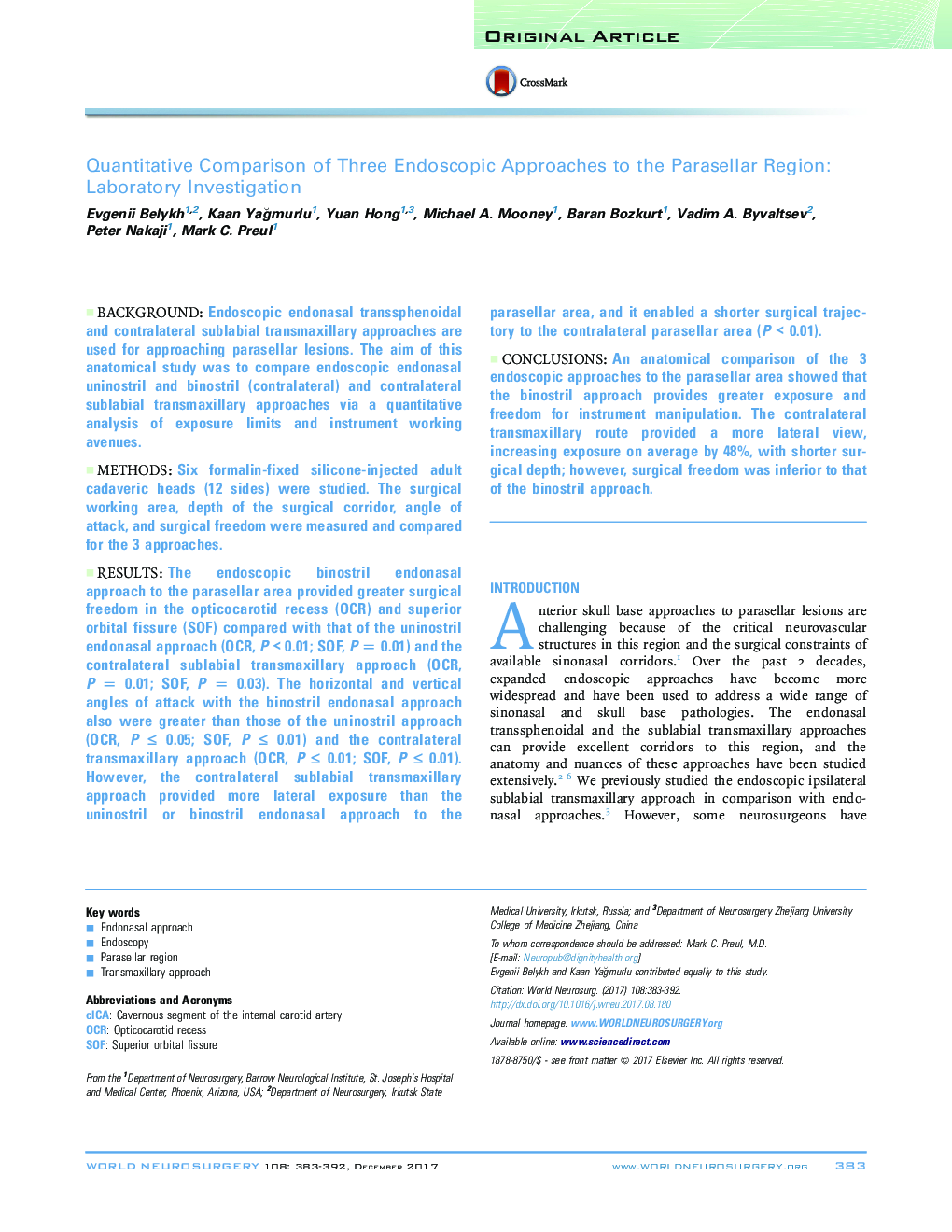| کد مقاله | کد نشریه | سال انتشار | مقاله انگلیسی | نسخه تمام متن |
|---|---|---|---|---|
| 5633785 | 1581447 | 2017 | 10 صفحه PDF | دانلود رایگان |
BackgroundEndoscopic endonasal transsphenoidal and contralateral sublabial transmaxillary approaches are used for approaching parasellar lesions. The aim of this anatomical study was to compare endoscopic endonasal uninostril and binostril (contralateral) and contralateral sublabial transmaxillary approaches via a quantitative analysis of exposure limits and instrument working avenues.MethodsSix formalin-fixed silicone-injected adult cadaveric heads (12 sides) were studied. The surgical working area, depth of the surgical corridor, angle of attack, and surgical freedom were measured and compared for the 3 approaches.ResultsThe endoscopic binostril endonasal approach to the parasellar area provided greater surgical freedom in the opticocarotid recess (OCR) and superior orbital fissure (SOF) compared with that of the uninostril endonasal approach (OCR, P < 0.01; SOF, P = 0.01) and the contralateral sublabial transmaxillary approach (OCR, P = 0.01; SOF, P = 0.03). The horizontal and vertical angles of attack with the binostril endonasal approach also were greater than those of the uninostril approach (OCR, P ⤠0.05; SOF, P ⤠0.01) and the contralateral transmaxillary approach (OCR, P ⤠0.01; SOF, P ⤠0.01). However, the contralateral sublabial transmaxillary approach provided more lateral exposure than the uninostril or binostril endonasal approach to the parasellar area, and it enabled a shorter surgical trajectory to the contralateral parasellar area (P < 0.01).ConclusionsAn anatomical comparison of the 3 endoscopic approaches to the parasellar area showed that the binostril approach provides greater exposure and freedom for instrument manipulation. The contralateral transmaxillary route provided a more lateral view, increasing exposure on average by 48%, with shorter surgical depth; however, surgical freedom was inferior to that of the binostril approach.
Journal: World Neurosurgery - Volume 108, December 2017, Pages 383-392
